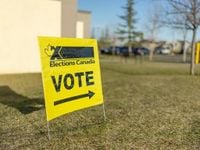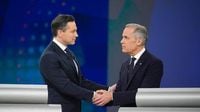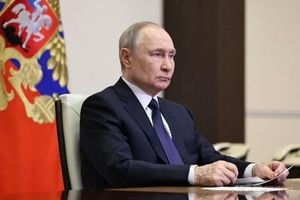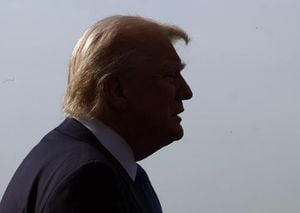Canadians are heading to the polls today in a highly anticipated federal election that could reshape the nation's political landscape and redefine its relationship with the United States. As voters cast their ballots in the 45th general election, the stakes are high, with economic anxiety, rising costs of living, and immigration debates dominating the discourse. This election follows a snap call just weeks after Mark Carney replaced Justin Trudeau as the leader of the Liberal Party and Prime Minister.
The election is taking place under a "first-past-the-post" system, where voters in 343 electoral districts, or ridings, will select their local Members of Parliament (MPs). The party that secures the most seats typically forms the government, although a minority government could emerge if no party achieves a majority.
Mark Carney, the 60-year-old Liberal leader and former governor of both the Bank of Canada and the Bank of England, is presenting himself as a technocrat capable of navigating the complex economic challenges facing Canada. He aims to address surging inflation, a housing affordability crisis, and escalating trade tensions with U.S. President Donald Trump. Carney has emphasized the importance of strengthening Canada's sovereignty and economy, stating, "Canada must never bow to intimidation, no matter the source."
On the other hand, Conservative leader Pierre Poilievre, 45, has made the cost-of-living crisis the centerpiece of his campaign. He blames government overspending and immigration-driven demand for skyrocketing housing costs. Poilievre has promised to cut federal spending, lower taxes, and deregulate housing markets to make homeownership attainable again. However, his populist style has made him a polarizing figure, as he tries to distance himself from Trump's rhetoric while promoting a "Canada-first" approach.
Jagmeet Singh, leader of the New Democratic Party (NDP), is positioning his party as the progressive alternative to the two main contenders. Singh's NDP has campaigned on ambitious promises, including universal pharmacare and affordable housing. However, the party is currently polling below 10%, struggling to expand beyond its traditional base. Singh has severed a confidence-and-supply agreement with the Liberals, voicing concerns over their handling of labor disputes and workers' rights.
In Quebec, Yves-François Blanchet leads the Bloc Québécois, which focuses on defending provincial interests and promoting Quebec nationalism. While the Bloc is unlikely to form a government, it could play a crucial role in a minority Parliament, particularly if the Liberals falter.
The latest national averages indicate that the Liberals hold a slim lead with 42.5% support, compared to 38.9% for the Conservatives, according to CBC's Poll Tracker. The NDP stands at 8.6%, while the Bloc is polling strongly within Quebec. A record-breaking 7.3 million Canadians cast early ballots during the Easter long weekend, reflecting heightened voter engagement.
As the election unfolds, economic concerns remain at the forefront. Canadians are grappling with a worsening cost-of-living crisis, characterized by soaring housing prices, rising grocery bills, and stagnant wages. Both Carney and Poilievre have proposed competing visions to alleviate economic strain, with promises of tax breaks and housing reforms.
Immigration has also emerged as a contentious topic, with record levels of newcomers straining services in major cities. Carney defends high immigration levels as essential for economic growth, while Poilievre vows to reduce intake until infrastructure can catch up.
The escalating trade conflict with the United States has further complicated the election landscape. Since returning to the White House in January, President Trump has imposed sweeping 25% tariffs on Canadian steel, aluminum, lumber, and agricultural goods, claiming Canada has taken advantage of U.S. trade policies. Trump has made inflammatory remarks, suggesting that Canada could become the "51st state," and warning that the U.S. would take necessary action to protect American workers.
In response to Trump's threats, Carney has vowed to strengthen economic alliances beyond the U.S., particularly with Europe and the Asia-Pacific. The rising tensions have sparked a surge in Canadian nationalism, with polls indicating that a significant majority of Canadians wish to decrease reliance on the U.S. as a trade partner.
As voters head to the polls, the outcome remains uncertain. Political analysts warn that the race is fluid, with many ridings too close to call. Turnout trends are likely to sway final results, with enthusiasm highest among Conservative and Bloc Québécois supporters. In key battlegrounds such as Ontario's 905 region and suburban Vancouver, local races are neck-and-neck, highlighting the unpredictable nature of the election.
With the election day upon us, the future direction of Canada hangs in the balance. Voters are urged to consider the candidates' positions on pressing issues, including the economy, health care, housing, and immigration, as they cast their ballots. The results will not only determine the next government but also shape the country's path amid ongoing challenges.





